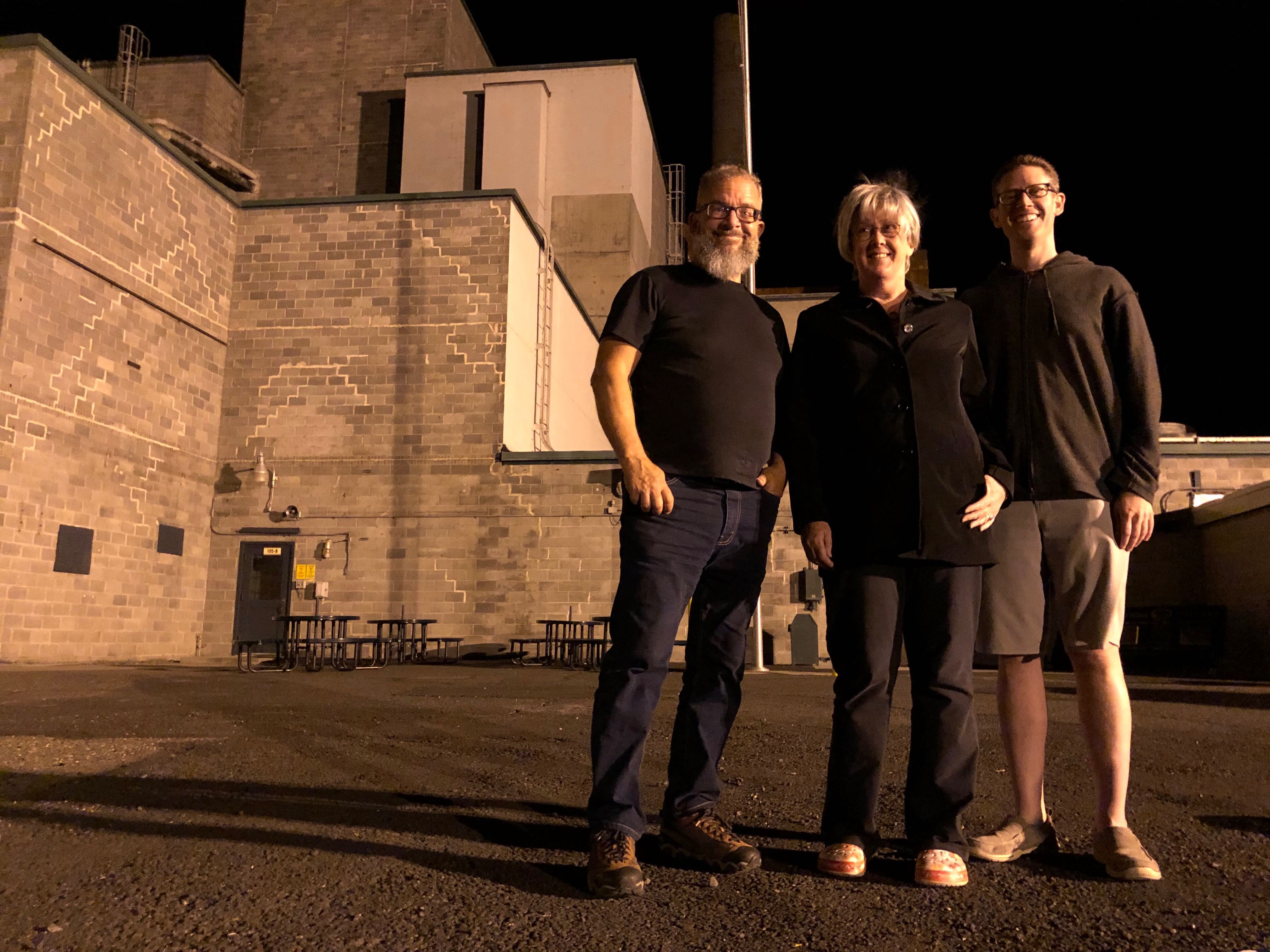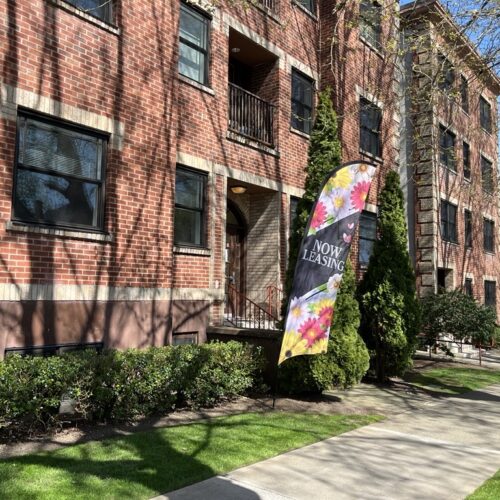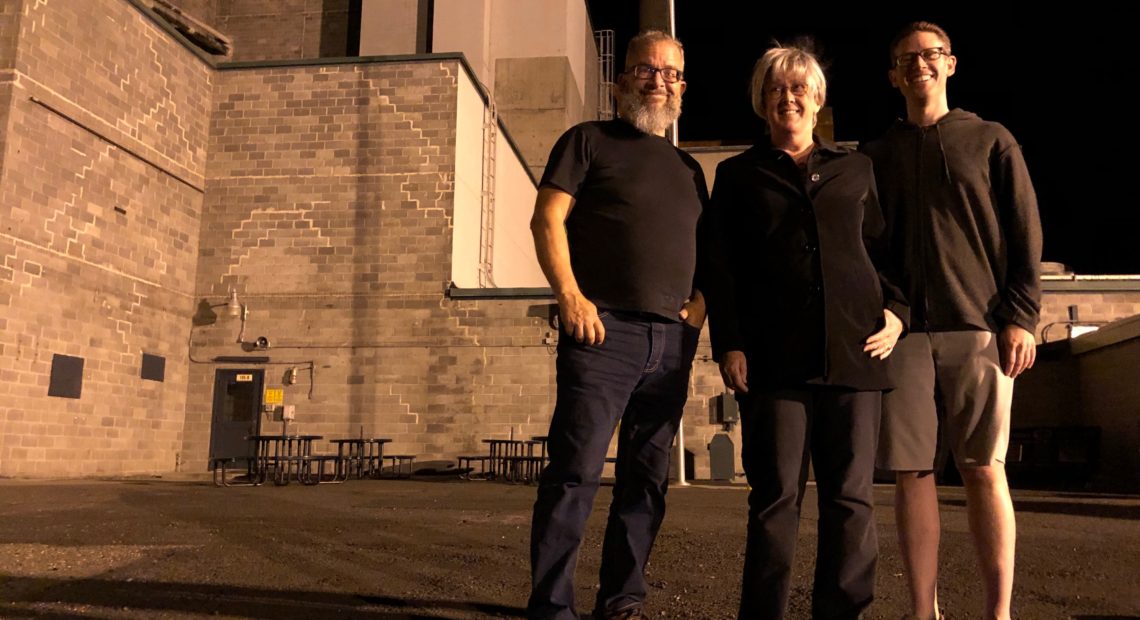
Oratorio Performed Inside Hanford’s B Reactor Explores Nuclear Workers’ Dreams And Nightmares
Listen
You’ve heard the grim numbers about the Hanford nuclear site — the millions of gallons of radioactive waste and the growing price tag for cleanup.
But now, the creators of a new musical work called “Nuclear Dreams” highlight the dreams and nightmares of people who work and live near Hanford in Washington’s Tri-Cities.
“Sadness In The Soul”
On a recent weeknight, an orchestra with strings, bells, marimba and flute, along with Seattle-area soloists and the Mid-Columbia Mastersingers practice a choral concert called an oratorio.
“There is a sadness in the soul,” the male soloist sings, “A sadness in the soul.”
Hanford worker Nancy Welliver wrote the lyrics. A song titled “Radioactive Roses” talks about her own dream of Hanford.
“I was walking around the B Reactor looking for this gift for my father, and somebody started singing,” Welliver says as she begins to cry. “Somebody started singing, and all the songs became flowers. And they fell out of the air and into my arms.”
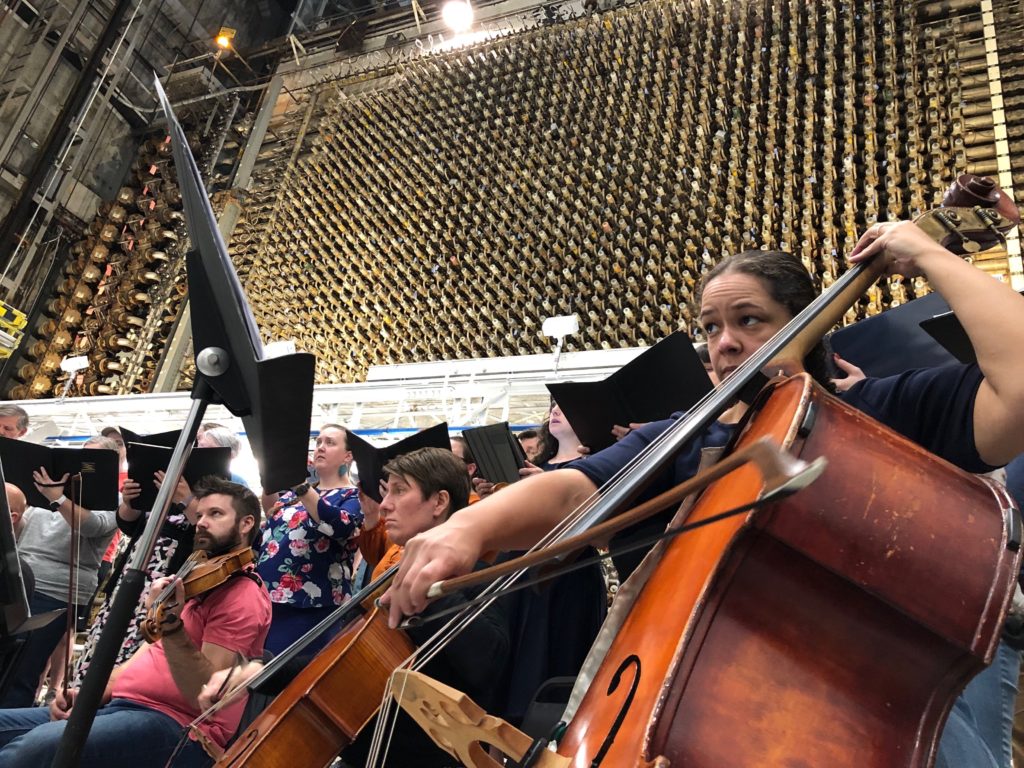
The orchestra practices the new oratorio, “Nuclear Dreams” in front of the B Reactor’s face at Hanford. CREDIT: ANNA KING/N3
Composer Reg Unterseher says the music and lyrics center on the dreams of nuclear workers.
“It’s about how do normal people react to what seems to the outside world as really extraordinary,” Unterseher says. “And the things that we’ve got quite used to in the Tri-Cities, things that we think are perfectly normal. Everybody (else) goes, ‘What? That’s strange.’”
For example: that he can see a nuclear reactor from his house’s back deck. Or that he has a friend who was on the team that won the Nobel Prize from studying black holes in space at the LIGO facility at Hanford.
The chorus is made up of Tri-Cities residents. Audiences for the upcoming performances will be bused to the B Reactor — the world’s first full-scale nuclear reactor — now a national historic landmark.
The building is surrounded by sagebrush. Inside, the musicians and choir set up right in front of the nuclear reactor — with flashing yellow lights and a constant mechanical hum. Musical chimes ring out as they’re shifted into place and hammers whack.
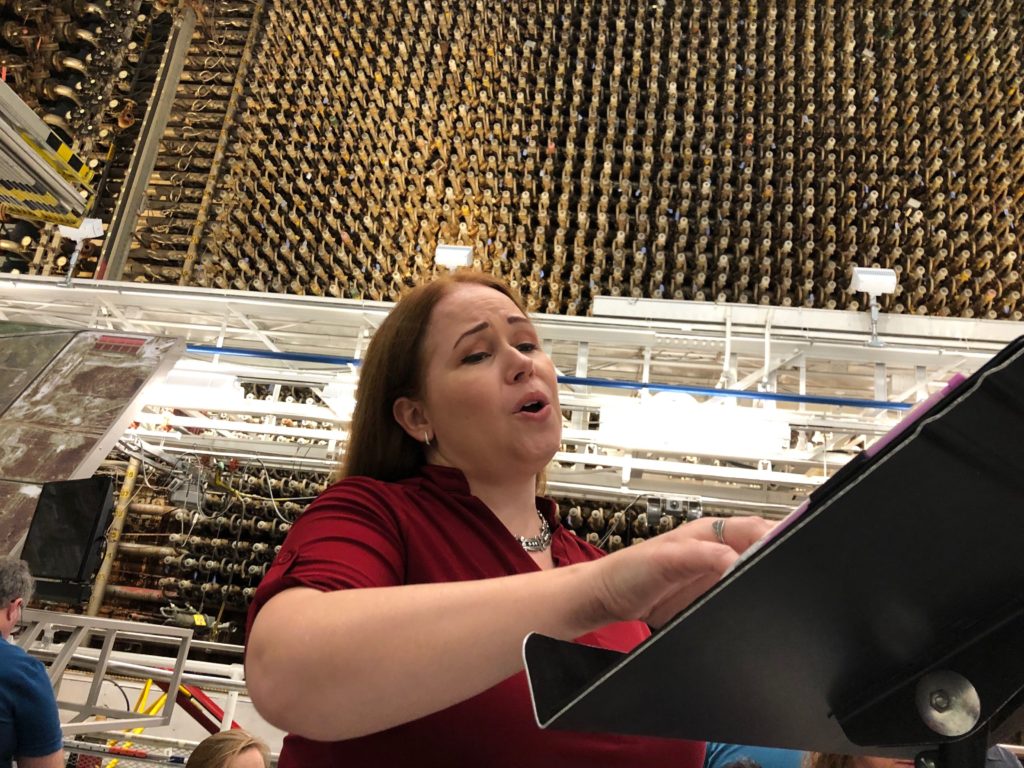
The female soloist, Sarah Mattox, of Edmonds, Wash., sings in the B Reactor at Hanford. CREDIT: ANNA KING/N3
The space is all hard surfaces, high ceilings and a reflective sound quality. The choir calls it the “cathedral of the nuclear age.”
A female soloist belts out, “There is a radiance in the soul.”
Dreams And Oral Histories
To write her piece, Welliver adapted her graduate school paper about dreams and oral histories of Hanford workers.
Welliver was inspired by Freud and Jung and mythology.
“(Hanford has) got heroes, and warriors, and sadness, heartbreak, triumph, it’s got all that stuff in it. It’s just this great story,” Welliver says.
She says our culture is so hurried, so literal and so materialistic.
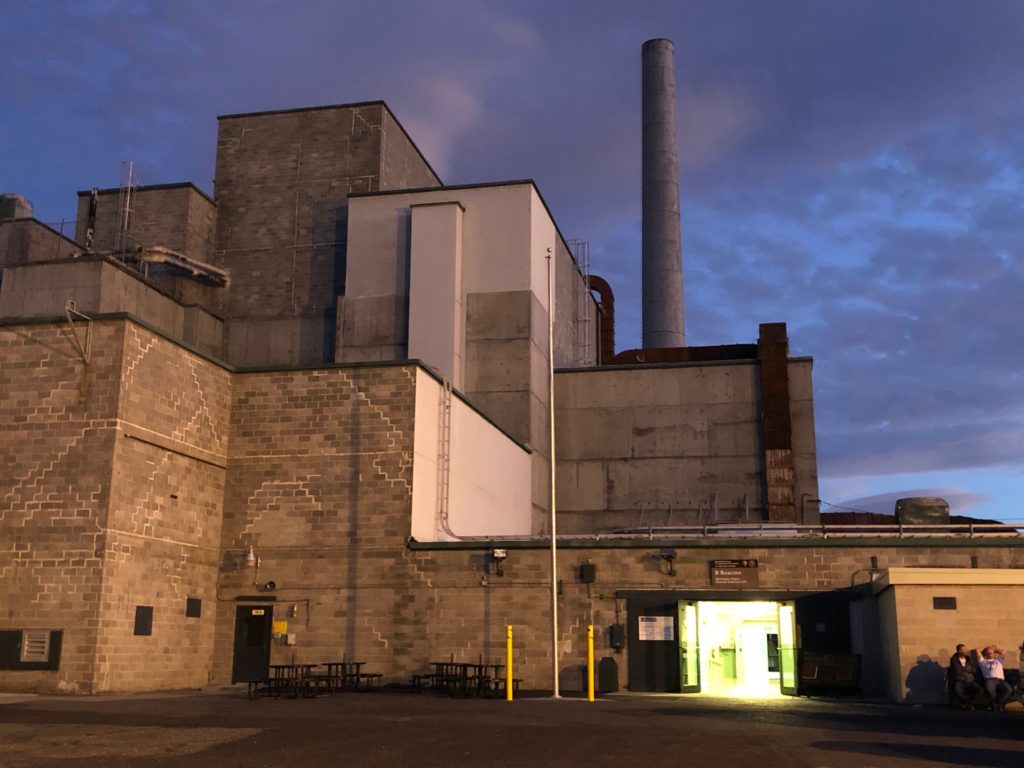
The B Reactor is a national historic landmark now, and opens its doors occasionally for special concerts and performances. Some call it, “the cathedral of the nuclear age.” CREDIT: ANNA KING/N3
“I think it’s really important sometimes to go back to these ancient stories,” Welliver says. “And kind of remember our roots and what makes us human.”
When Night Became Day
B Reactor made plutonium for bombs, and the oratorio includes an oral history of early atomic bomb test explosions, when night became day.
The female parts sing, “It was completely daylight, at midnight,”while the male part of the chorus sings low, “Whoever is listening to this.”
Welliver hopes “Nuclear Dreams” can heal some of the complex history and feelings of Hanford’s past mission to help make nuclear weapons.
Related Stories:
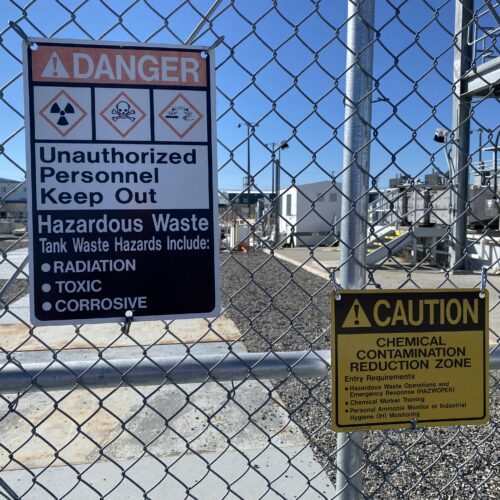
Washington’s Senator Patty Murray said Hanford safety in jeopardy, she’s ‘really, really worried’
(Credit: Anna King / NWPB) About a dozen federal workers have been fired from the Hanford site in southeast Washington state. Hanford is the contaminated legacy of plutonium manufacturing during
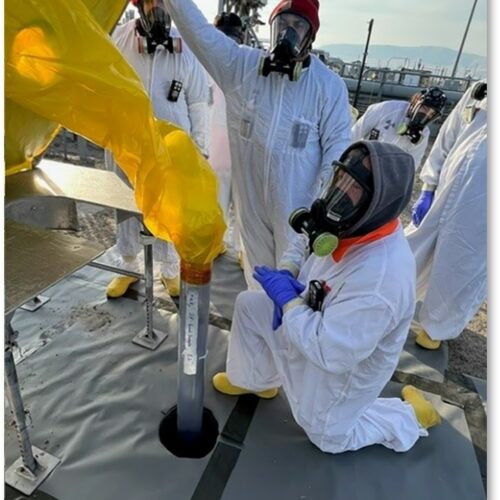
Washington state, federal agencies finalize agreement for tank waste cleanup at Hanford
Hanford workers take samples from tank SY-101 in southeast Washington state. (Courtesy: U.S. Department of Energy) Listen (Runtime :59) Read When it comes to tank waste at Hanford in southeast
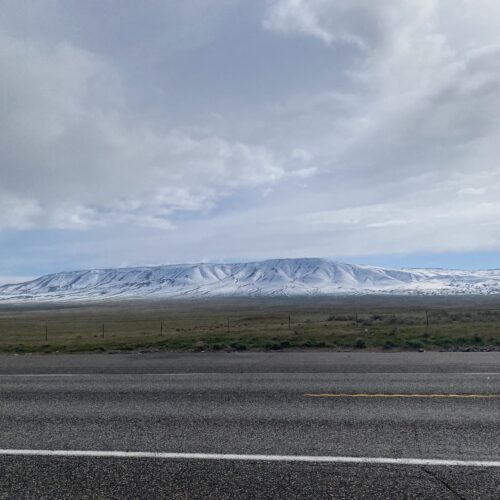
Hanford safety officer hired on by Yakama Nation
Rattlesnake Mountain on the Hanford site in 2022. The mountain is sacred to the Yakama Nation and other Northwest Indigenous tribes and bands near the Hanford site. (Credit: Anna King

